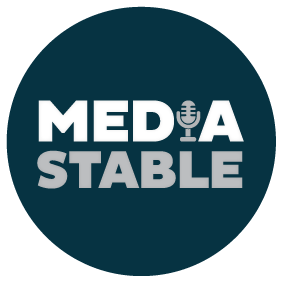Improve your TV appearances from outside the studio
One benefit from the pandemic which will be a remaining feature of the media landscape is the willingness and acceptance of broadcast media to conduct interviews via Zoom or Skype. With this new willingness, comes an expectation from media that the talent will try to ensure an online interview goes smoothly and both looks and sounds great.
Still too often, I see expert guests or commentators present on camera from a set-up that looks substandard. When you can’t be in the studio, you need to be able to create your own studio environment.
Here’s some tips for anyone looking to be better prepared for a TV engagement or who wants to create quality video content.
Location: Identify a location within your home or office that is quiet and can be used as a broadcasting point. Choose a room with as much natural light as possible. Avoid empty rooms with sparse walls and hard wooden or tiled floors. Instead choose a room with rugs, furniture and curtains, as this will improve the sound quality.
Equipment: You will obviously need a device such as a laptop, phone or tablet to do the cross. Laptops don’t always have great cameras so you might consider either buying a camera that mounts on the screen or using your phone or iPad. A ring light these days is a must for any video or TV cross. They are inexpensive and can be purchased online and delivered. Have a good backdrop, and if you’re serious in creating a permanent studio, invest in branding and digital equipment that enhances your broadcast. Finally, make sure your internet connection is strong and stable.
Signage and backdrop: Any business owner should identify a location within their office that is used for media crosses or interviews. At home, a bookcase, some artwork and houseplants can help to dress up a dull room. Ideally for a business, this area will have some signage, logos or branding that identifies the business. You can recreate the same look at home with pull up banners or signage. Try to be subtle about this for TV, as trying to impose your brand or logo too forcefully will turn media off.
Lighting: Lighting is one of the most important aspects for any TV cross because the medium requires light for crisp and clear images. Use natural light where possible and have it in front of you and not behind you. Shadows and darkened faces are not acceptable for a TV broadcast. Position your ring light behind the camera, and do a test run, to ensure you’re well-lit.
Sound: Enclosed rooms with brick walls or with numerous windows can become echo chambers. Be prepared to hang curtains or blankets to soften reverberations. Earpieces and microphones are a smart investment so that you come across loud and clear. Find a space where you aren’t going to be interrupted from outside noises like traffic, pets, wildlife and children.
Showing some attention to detail when preparing for an online interview won’t go unnoticed by media and should ensure you’re asked back again. Journalists and producers like to engage experts and commentators who try to ensure their media engagement is of the highest quality. It’s one of the easiest ways for you to become their media asset.
By Nic Hayes, Managing Director of Media Stable
